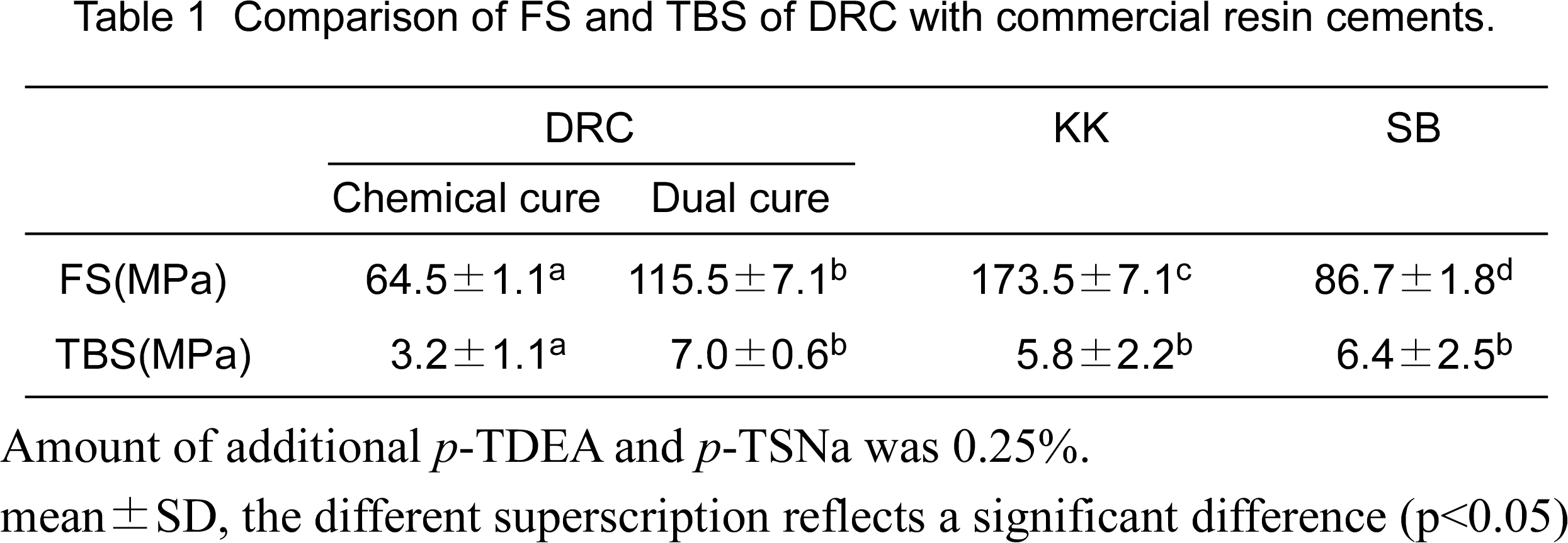ABSTRACT: 3111
Development of novel resin cement for direct bonding system
| J. LI, Y. TANIMOTO, I. SHIBUYA, and N. NISHIYAMA, Nihon University School of Dentistry at Matsudo, Japan | |
Click on images to view full size. Objective: We designed dual curing type resin cement (DRC) for the direct bonding system by using novel initiator system, consisting of camphorquinone, 2-Methacryloxyoxy-ethyl-hydrogen phtharate, p-Tolyldiethanolamine (p-TDEA), and sodium-p-Toluenesulfinate (p-TSNa), for polymerization. The effects of additional p-TDEA and p-TSNa on the flexural strength (FS) of the DRC and the tensile bond strength (TBS) of the metal bracket bonded to the enamel by the DRC were examined. Methods: The FSs of the DRC prepared with or without visible light irradiation (30 seconds), were measured. Furthermore, the TBS of metal bracket to enamel was measured with or without visible light irradiation (3 seconds). The FSs and TBSs of commercial resin cements, Kurasper K (Kuraray medical; KK), Super bond (Sun medical; SB), were also measured, after preparing each specimen according to their instruction. Results: The irradiation of visible light to the DRC resulted in an increase in the FS and the TBS, as shown in Table 1. However, the DRC showed a lower FS than KK. Contrary, the DRC provided a highest TBS, even though the FS of the DRC was lower than the KK. This was because the polymerization conversion of KK, which existed at the back side of the metal bracket, became lower than the DRC, due to the metal bracket inhibiting the transmittance of visible light. Conclusion: The result obtained from the present study suggests that the polymerization conversion of the DCR, which existed at the back side of the bracket, would become increased by using novel chemical cure activator. | |
| Seq #290 - Orthodontics/Enamel Adhesion 1:45 PM-3:00 PM, Saturday, July 5, 2008 Metro Toronto Convention Centre Exhibit Hall D-E | |
|
Back to the Dental Materials 1: Adhesion - Bond Strength Testing and Mechanisms Program | |
©Copyright 2008 American Association for Dental Research. All Rights Reserved.
